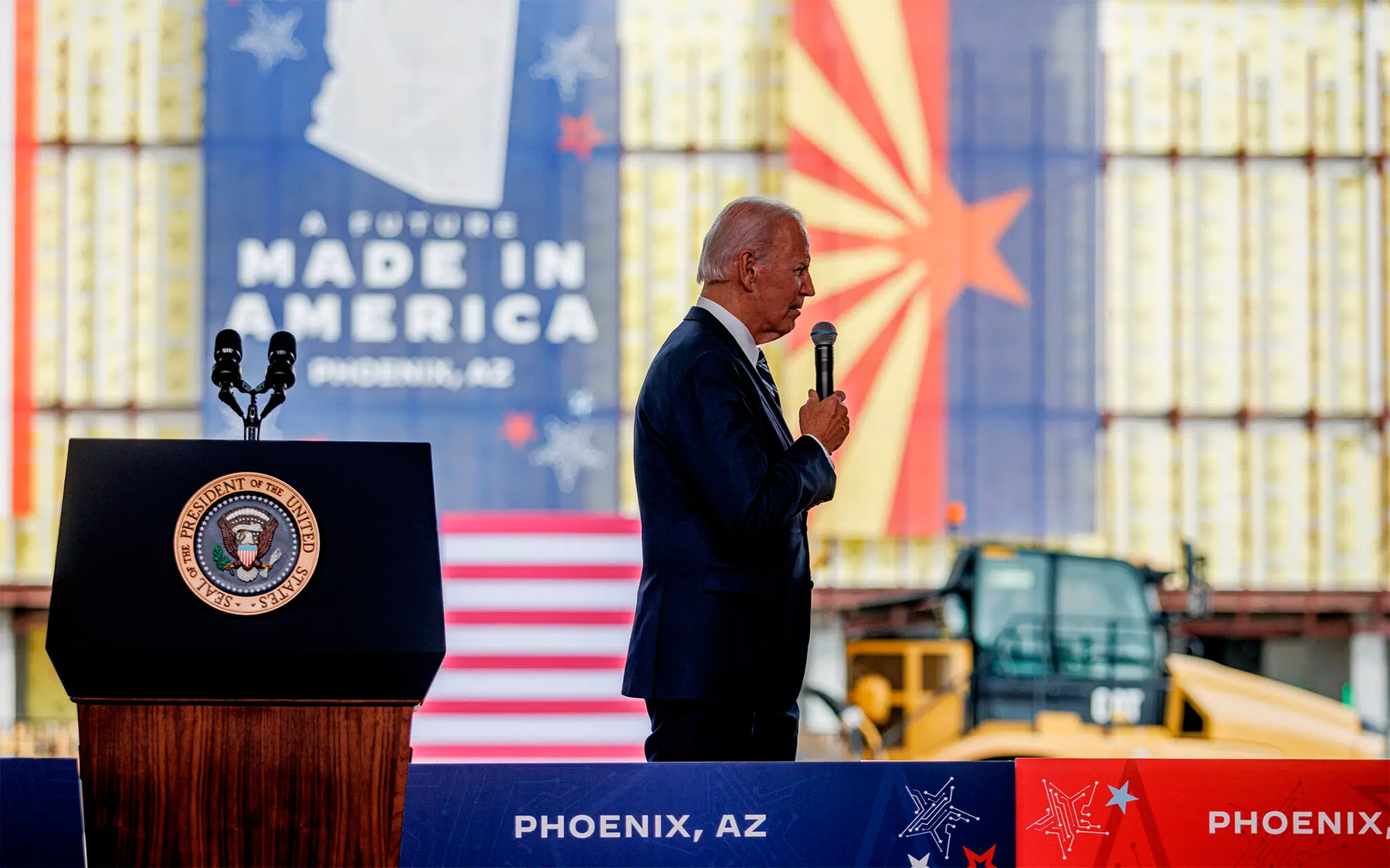During his time in office in 2016-2020, Donald Trump revealed his support for the increasing containment of the PRC. His anti-Chinese rhetoric was combined with very specific restrictive measures against Beijing. A number of new legal mechanisms have emerged that imply sanctions against China and are enshrined in both federal law and presidential decrees. In other words, the attack on Beijing was carried out both by the executive branch and by Congress. During the presidency of Joe Biden, anti-Chinese policy has been more moderate, but it is still increasing. The outcome of the election will not affect the nature of US policy towards China. It will be characterised by rivalry and containment. A Trump victory, however, could accelerate the deterioration of bilateral relations.
It is quite possible that we will see an increase in the ideological component in containing China (“democratic America” versus “authoritarian China”), an expansion of technological restrictions, blocking and trade sanctions against individuals and companies, and a return to a trade war. However, all of these measures pale in comparison to the scale of sanctions and containment policies that the United States is currently using against Russia. China itself has drawn conclusions from Trump’s first term in office. Beijing has developed its own sanctions policy mechanisms, formalising them at the legislative level and practicing their application. On a larger scale, China is working to increase the autonomy of its technological and financial systems. However, neither Washington nor Beijing seems ready to break the system of existing interdependence. US-Chinese relations will most likely follow a course of controlled rivalry over the next four years. Trump’s victory will make control more difficult, but it will not cancel the demand for it on both sides of the Pacific Ocean.
During his time in office in 2016-2020, Donald Trump revealed his support for the increasing containment of the PRC. His anti-Chinese rhetoric was combined with very specific restrictive measures against Beijing. A number of new legal mechanisms have emerged that imply sanctions against China and are enshrined in both federal law and presidential decrees. In other words, the attack on Beijing was carried out both by the executive branch and by Congress. During the presidency of Joe Biden, anti-Chinese policy has been more moderate, but it is still increasing. The outcome of the election will not affect the nature of US policy towards China. It will be characterised by rivalry and containment. A Trump victory, however, could accelerate the deterioration of bilateral relations.
Relations between the United States and China experienced an unprecedented upswing following the end of the Cold War. The driving force was the enormous volume of economic cooperation, which later developed into economic interdependence. This was the case even if the Taiwan issue remained on the agenda, and restrictions on the export of American weapons and certain technologies to China continued to be in effect. Washington occasionally warned Beijing regarding human rights, democracy, the situation in the South China Sea, and excessive armed forces. However, the comments did not disrupt the overall positive nature of relations.
China has firmly integrated into the American-centric model of globalisation, but unlike most other countries, it has been able to maintain its sovereignty and prevent the United States from influencing its domestic political processes.
China's economic rise has led to the strengthening of its technological, industrial, and military capabilities. Sooner or later, such growth was bound to become a problem for the United States. The presidency of Donald Trump in 2016-2020 was a period when a visible shift occurred in American policy towards China.
Certain difficulties arose in US-Chinese relations even during the presidency of Barack Obama. In 2015, the US President signed Executive Order 13694, which implied targeted sanctions against those who carry out malicious actions in the digital space. Although China was not mentioned by name in the document, its emergence was by default associated by Americans with an attack by Chinese hackers who stole several million personal files of American government employees. During the Obama presidency, security issues in Asia were also emphasised. However, the US administration avoided exacerbating relations with Beijing.
Trump changed the approach to China both at the doctrinal level and at the level of practical policy. In doctrinal terms, Trump exacerbated all the comments that were previously made about the PRC in a cautious and delicate manner: China is an authoritarian country with a communist regime that has little in common with American values. The rise of the PRC is a problem and a challenge for the United States. China's overseas projects, such as the Belt and Road project, are a means of economic expansion for the Celestial Empire that must be contained. China's economy itself is unfair because it ignores market values and develops at the expense of others, including the United States. China's technological growth is also a problem for the United States because it is used for military and political purposes, which means that China must be forced to "run slower" or at least not to get American technologies that are necessary for China's development.
The practical measures taken were in line with these doctrinal guidelines. The US Department of Commerce's Entity List included the Chinese telecommunications giant Huawei and its subsidiaries. Huawei and a number of other companies were restricted in the acquisition of US semiconductors as well as those developed using American technology. Based on the provisions of PL 105-261 of 1998, the administration compiled a list of "Chinese Communist military companies." It included large companies in the fields of telecommunications, aircraft manufacturing, shipbuilding, engine manufacturing, etc. They were prohibited from raising capital on the US stock market. In addition, Trump imposed bans on the Chinese communications services WeChat and TikTok. Congress, in turn, passed legislation regarding the problems allegedly facing ethnic minorities in the Xinjiang Autonomous Region of the PRC, as well as on the issue of Hong Kong’s autonomy. The administration used blocking financial sanctions to target Chinese officials on both issues. The sanctions were launched in parallel with the US-China trade war, which was effectively initiated by Trump and aimed at balancing the trade balance between the two countries. The COVID-19 epidemic provoked another attack on China. Trump, a number of members of Congress, and even individual US states directly accused Beijing of spreading the pandemic, concealing important facts about it, and persecuting those who wanted to tell what Americans considered the truth.
In the 2020 elections, Trump used China as a scapegoat and a culprit in developing a foreign policy during his election campaign. He lost the election, and the winner, Joe Biden, somewhat reduced the intensity of passion. New blocking sanctions were introduced in an extremely limited manner, the list of “military companies” was not actively replenished, and Trump’s decrees on WeChat and TikTok were cancelled. However, the legal architecture of the sanctions itself remained unchanged. The state of emergency on security in the field of telecommunications remained in force, albeit without a direct mention of China. The laws on the Xinjiang Autonomous Region and Hong Kong have not gone anywhere. The supply of semiconductors to Chinese telecom giants is still prohibited. The ban on TikTok was eventually enshrined in a federal law and signed by the president. US authorities have been actively using secondary sanctions against Chinese companies in cooperating with Russia since the start of the special military operation in 2022. In other words, the Biden administration was much more restrained in its anti-Chinese rhetoric. However, it did not change the structure of sanctions pressure on China. The problems that generated the sanctions were not resolved.
In the end, both Trump and Harris, if they win, will continue the course of containing China. However, Trump's performance will be more aggressive and assertive.
It is quite possible that we will see an increase in the ideological component in containing China (“democratic America” versus “authoritarian China”), an expansion of technological restrictions, blocking and trade sanctions against individuals and companies, and a return to a trade war. However, all of these measures pale in comparison to the scale of sanctions and containment policies that the United States is currently using against Russia. China itself has drawn conclusions from Trump’s first term in office. Beijing has developed its own sanctions policy mechanisms, formalising them at the legislative level and practicing their application. On a larger scale, China is working to increase the autonomy of its technological and financial systems. However, neither Washington nor Beijing seems ready to break the system of existing interdependence. US-Chinese relations will most likely follow a course of controlled rivalry over the next four years. Trump’s victory will make control more difficult, but it will not cancel the demand for it on both sides of the Pacific Ocean.
First published in the Valdai Discussion Club.






